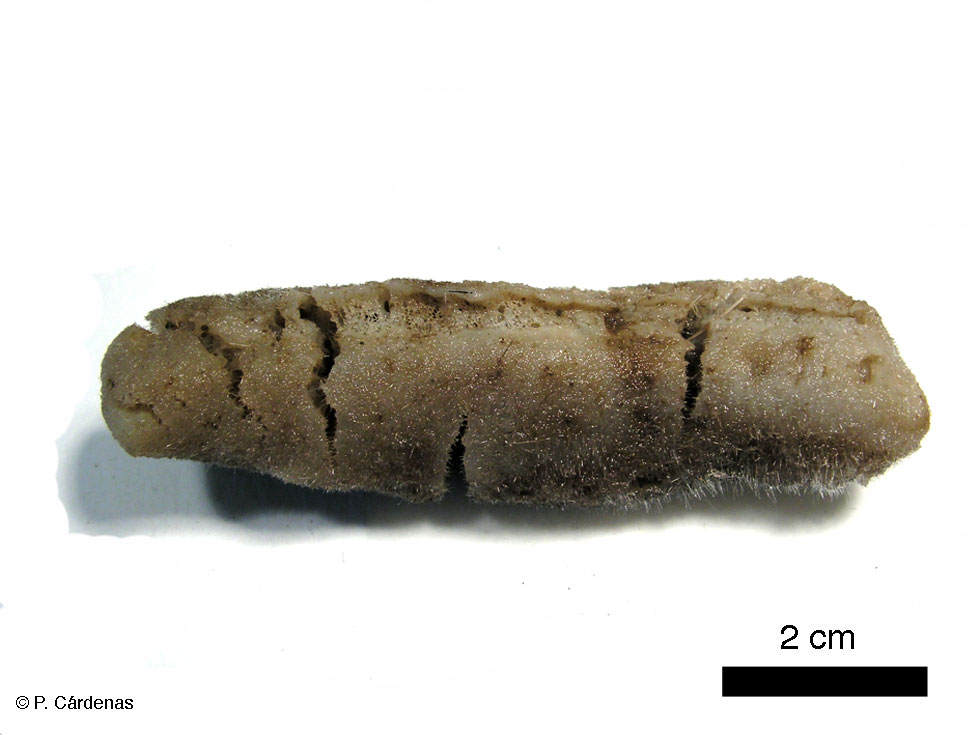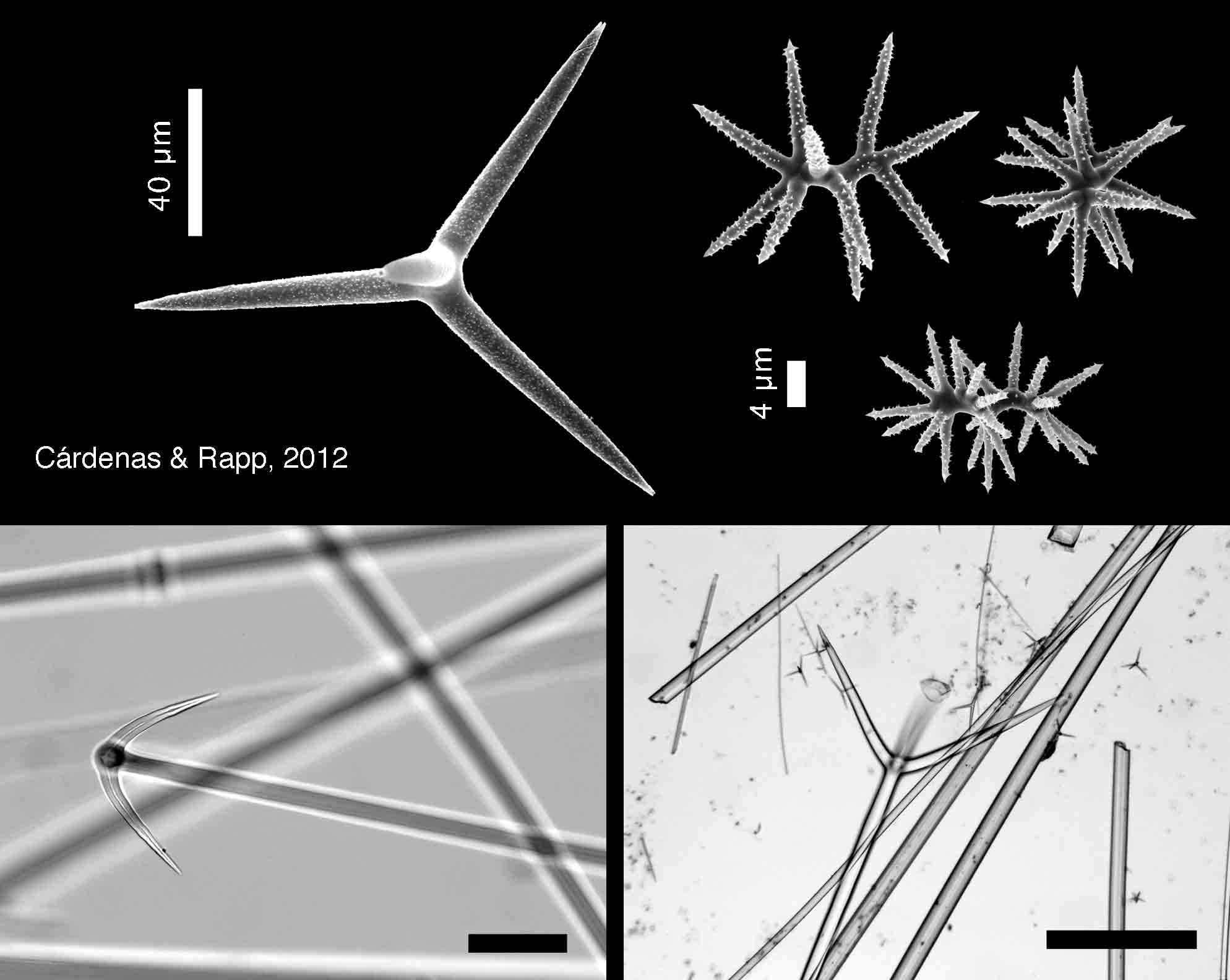Morphological description (show/hide)
| massive, elonguated, straight, 8 cm long, 2 cm high | | brown | | brown | | with sieve, opposite to the pores (also with sieves) | | not compressible | | minutely hispid | | Spirasters and plesiasters can be found throughout the choanosome. Abundance of plesiasters, especially near the poral area. | | Radial bundles of eoxeas start at the center of th specimen. Many go beyond the surface. Triaenes and many protriaenes are found only at the surface, either crossing the ectosome or supporting it. Spirasters are abundant in the ectosome. | | (a) oxeas, stout, straight or slightly bent, length: 3375-5311.5-7750 μm (N=13); width: 35-70-95 μm (N=17). (b) dichotriaenes (Fig. 19D), straight rhabdome, length: 4500-5187-6500 μm (N=4); width: 33-58.6-85 μm; protoclad length: 130-196.3-260 μm; deuteroclad length: 230-574.8-950 μm. (c) anatriaenes (Fig. 19E), straight rhabdome (which can become flexible at its end), many irregular swellings were observed on some rhabdomes, length up to 1,35 cm; rhabdome width: 5-14.4-20 μm; clad length: 15-111.9-160 μm (N=14). A more or less developped swelling can be found above the cladome. (d) protriaenes (Fig. 19F), common, straight, rhabdome length: from 3825 μm to >5700 μm; rhabdome width: 40-54.1-75 μm (N=18); clad length: 400-609.6-1200 μm (N=14). | | (e) spirasters (Fig. 18D), spined, length: 17,5-21,4-29,1 μm. (f) plesiasters (Fig. 18C), very abundant, 3-6 actines, faintly spined (not visible with an optical microscope), actine length: 30-83,7-145 μm; actine width: 4,2-10,8-24,3 μm. |
|
Reference (show/hide)
| Cárdenas, P., Xavier, J.R., Reveillaud, J., Schander, C. & Rapp, H.T. (2011) Molecular phylogeny of the Astrophorida (Porifera, Demospongiae) reveals an unexpected high level of spicule homoplasy. PLoS ONE, 6, e18318. |
|





